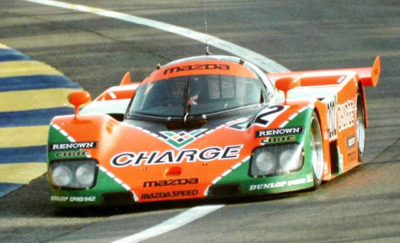Getting 30-year-old race cars ready for vintage events requires special skills
Pre-race prep is an important part of motorsports. Checking everything that might break, making sure the fasteners are tight, and that a car’s systems are in good condition goes a long way toward a successful and stress-free racing weekend. That function becomes more challenging, though, when the cars you are preparing are decades old and were one of only a few made.
Randy Miller is in charge of Mazda North American Operations’s fleet of historic race cars, and it’s his job to make sure they are safe, reliable and ready to go for major events like this weekend’s Monterey Motorsports Reunion at WeatherTech Raceway Laguna Seca. This year, some of the cars that will be going are a trio of prototypes – 1989 767B, a ’90 787 and a ’92 RX-792P – and a ’91 RX-7 GTO. All of these cars have a variety of one-off pieces that make keeping them running well and looking good a challenge.
“It’s a unique thing, because we have to take them down to the monocoque,” Miller explains. “The suspension pieces in the day were changed out every few weekends depending on the track, and 25 years later, we’re still running the same suspension. So I take everything off, get them x-rayed and crack checked at a company that checks airplane parts. I check the fasteners and do a check on the monocoque and carbon pieces to make sure it’s not delaminating. If something does come up, it presents a challenge. Everything on these cars is one-off. You’ve got to get things made, and sourcing parts or figuring out what they are is a lot of the time.”
Miller says he has a few places he can look for parts. Mazda’s Japanese headquarters is one place, and there are some teams that ran these cars originally that still have spares. Other things have to be made. Miller says that sourcing parts take as much, if not more, time than working on the cars. Plus there’s the knowledge base, or lack of it. There are no manuals. It’s basically take it apart and see how it all went together, although sometimes people like Jim Downing, who ran some of these cars in the past, can be a useful source of information. But the good news is that just about everything can be fixed now.
“With the way everybody’s buying up old race cars, there’s nothing that can’t be fixed at this point,” he says. “Things like monocoque delamination – we had a nose section of the GTP car come apart a few years ago and we took it down to Swift Engineering in San Clemente. They do mostly aerospace now, but were originally a race car manufacturer. There are a few local companies that can handle a job like that and bring it back to where they need to be.”
There are opportunities in vintage racing that go well beyond the exotic Group C and IMSA machinery that will appear at the Monterey Motorsports Reunion and other big events, though. Owners of original NA Spec Miatas have the opportunity to show them off in select Sportscar Vintage Racing Association events thanks to the Mazda Miata Heritage Cup. For those doing so, Miller has some words of advice beyond the usual race prep tips.
“Every car has its history,” he says. “I like to look at what every car has done, where it’s been. I enjoy researching and knowing what the car has done. Whether it’s competitive or not – and it’s human nature to want to win – but concentrating on the history of where it’s been and who has driven it is part of the value of a lot of these cars. It’s not just driving them around, it’s telling a story.”
Miata racers will have their next opportunity to participate in an SVRA event at the Heacock Classic Gold Cup at VIRginia International Raceway on Sept. 20-23.


 ACCESSIBILITY
ACCESSIBILITY